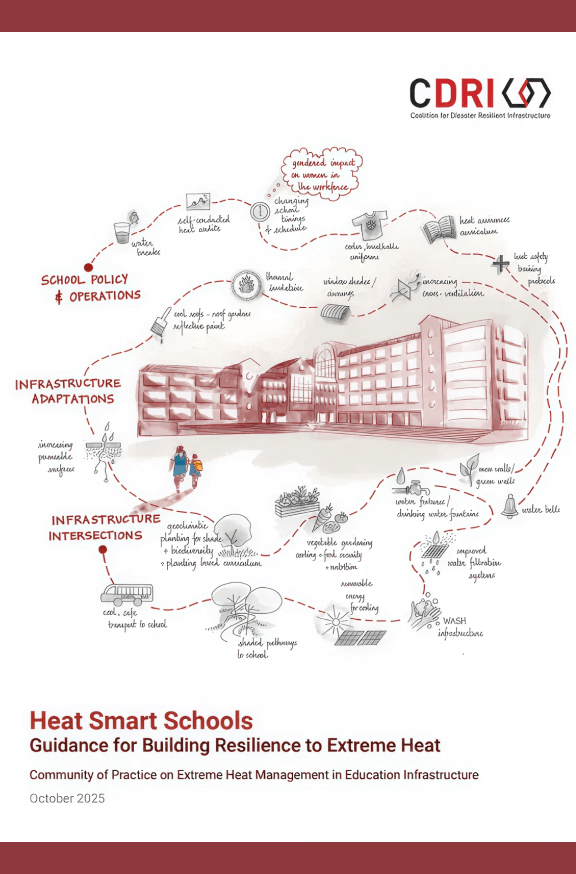Guidance for Building Resilience to Extreme Heat
Community of Practice on Extreme Heat Management in Education Infrastructure
Heat Smart Schools is a guidance framework by CDRI to help schools adapt to rising extreme heat risks. With over two billion children projected to face frequent heatwaves by 2050, the document emphasizes that heat threatens health, learning, and equity, especially in vulnerable communities.
It outlines seven actionable steps: establish inclusive governance, use science and forecasts, implement structural and nature-based cooling measures, integrate heat literacy into education, address underlying risks like water and nutrition, mobilize financing, and prepare for future heat events through drills and recovery planning.
Recommendations span structural retrofits, passive cooling, shaded spaces, hydration systems, and community engagement. The guidance promotes a whole-of-society approach, linking schools with municipal, health, and disaster systems to ensure resilience and safeguard children’s right to learn in a warming world.
Key points
- Extreme heat threatens children’s health, learning, and educational equity globally.
- Seven-step guide schools: governance, science, adaptation, education, resilience.
- Passive cooling, green spaces, and retrofits reduce classroom heat effectively.
- Heat literacy empowers students as advocates for safety and resilience.
- Financing from education, health, and climate budgets enables scalable interventions.
- Preparedness plans with drills ensure schools respond to recurring heatwaves.






